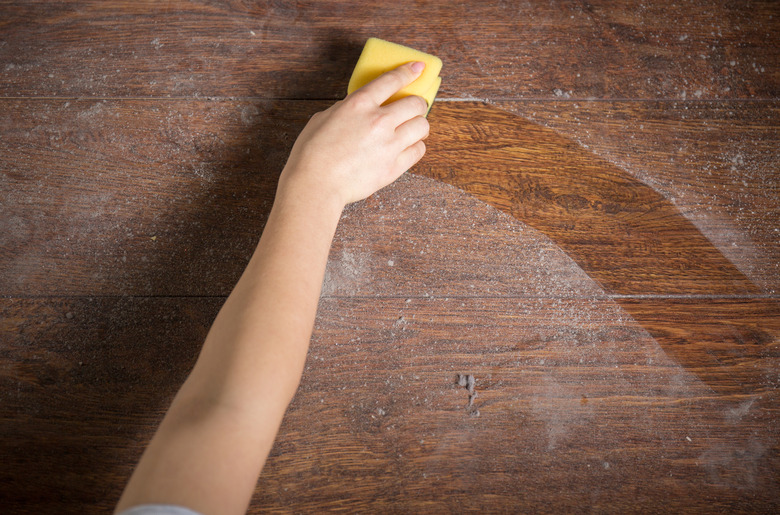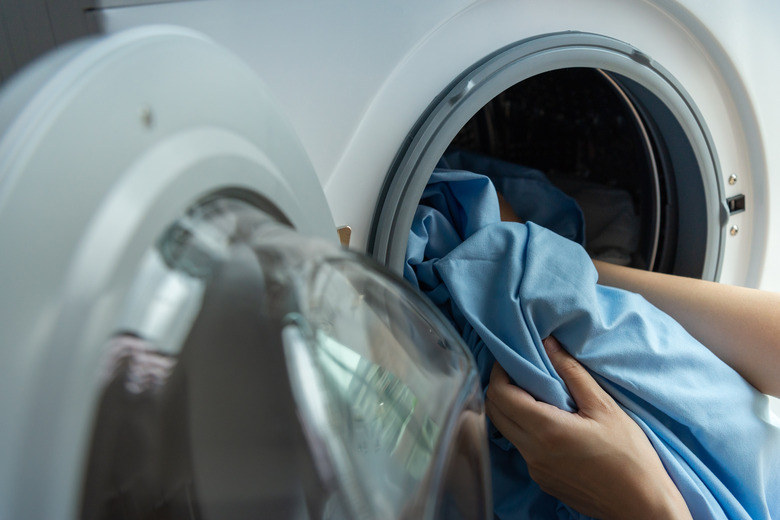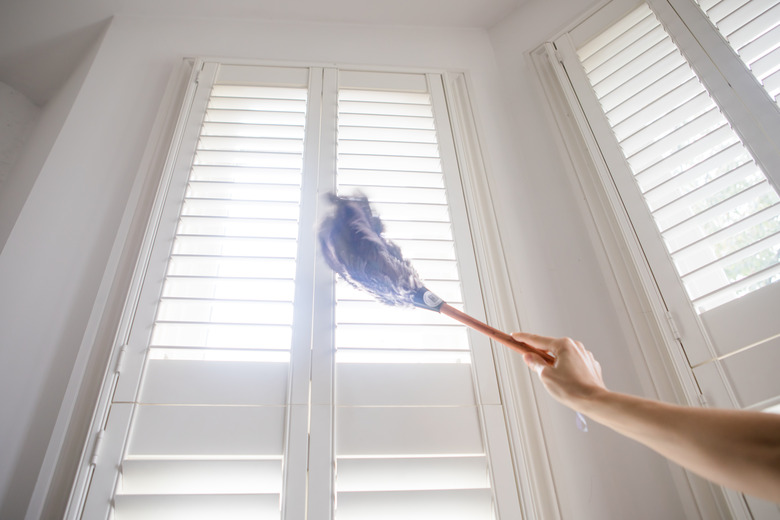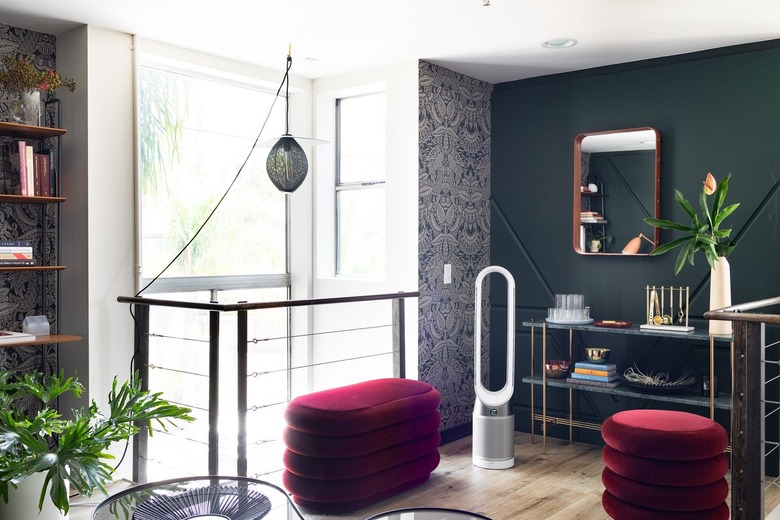How To Get Rid Of Dust Mites
Are you dealing with a stuffy nose, sneezing, and watery eyes every time you're inside your home? Dust mites and other allergens could be to blame. Getting rid of dust mites isn't as difficult as getting rid of bedbugs, but it's an ongoing battle. From pillowcases to carpeting, dust mites find lots of comfy places in your home.
What Do Dust Mites Look Like?
What Do Dust Mites Look Like?
Dust mites are microscopic bugs that are invisible to the naked eye, which makes it impossible to tell if you have them or to identify them visually. They love to gobble up dead skin cells, but they're not parasites, so you don't have to worry about them biting or stinging you. However, dust mites can be harmful to some people since fecal matter and dead dust mites can become allergens and irritants.
- Species name: Dermatophagoides farinae Hughes
- Physical characteristics: Translucent microscopic mites with eight legs
- Wings or wingless? Wingless
Dust Mites vs. Dust
Dust Mites vs. Dust
Dust in your home contains lots of debris, including dead skin cells, dirt, mold spores, pet dander, and fibers. Dust mite debris can also be a part of the dust. You can have an allergic reaction to dust itself, including any of the individual components. For example, you might react to pet dander, pollen, or dust mite debris. Since it's all mixed into the dust, it's impossible to know which part of the dust is causing your allergic reaction without testing.
If you notice your allergy symptoms getting worse when you clean or are around dust, an allergist can pinpoint which part of the dust is the problem. Your allergist will likely test for many allergies at once, especially if what's causing your allergic reaction is unclear. This can help you determine which part of the dust is the main culprit.
How to Get Rid of Dust Mites
How to Get Rid of Dust Mites
It might be impossible to get rid of dust mites completely, but you can cut down on the population. Getting rid of as many dust mites as possible can ease allergy symptoms. Focus on your bedroom, especially if you have more intense symptoms at night. Beds are often heavily infested.
Lower the Humidity
Moisture is a key component to dust mite survival. The tiny bugs absorb moisture from the air, so high humidity levels create the perfect environment for dust mite populations to grow. Keep your home's humidity level under 50 percent to discourage dust mites. A hygrometer measures humidity and can help you monitor the level.
Using a dehumidifier can also help during humid periods. Keep air circulating to help dry out your house. Plants can add humidity to the air, as can fish tanks, fountains, and other items with water, so limit them inside the home.
Wash Bedding Weekly
Stripping the beds every week might not seem like your idea of fun, but you need to wash bedding regularly to keep dust mites under control. Toss bedding in the washing machine with hot water set to at least 130 degrees Fahrenheit to help kill the dust mites. Dry the bedding in a hot dryer for at least 15 minutes. All that heat kills the dust mites that have made themselves at home on your bedding. Make sure your bedding is completely dry since dust mites like moisture.
Block Dust Mites
Your bedding is a prime target for your local dust mite population, with the mites often colonizing in your pillow and mattress, so blocking them as much as possible can help. Use pillow covers and mattress covers that are designed to block allergens and dust mites to keep them out of your pillows and mattresses. These covers use tightly woven fibers to keep allergens off your pillows and mattresses.
Dust mites can still get on the covers, but the covers are much easier to wash in hot water to kill dust mites. Some pillows can be washed, but it's much more difficult to get dust mites out of your mattress.
A hypoallergenic duvet cover can keep dust mites away from your comforter, and it's easy to remove from your comforter and wash with the rest of your bedding. Bulky comforters might not fit well inside your home washer and dryer, whereas a duvet cover is smaller and easier to wash, allowing you to launder it frequently.
Clean Your Home Properly
By removing dust from your home, you're also removing dust mite debris that can become airborne and cause issues. Vacuuming your carpets regularly using a vacuum cleaner with a high-efficiency particulate air (HEPA) filter can help control dust and dust mites. Run the vacuum over your upholstered furniture as well to suck up dust mites and the dead skin cells that attract them.
While dry sweeping, dusting, and vacuuming can help, they can also leave behind little remnants of dust and kick up the dust mite debris. Using damp cleaning methods when possible can help better control the dust and dust mites. This is easiest on hard surfaces, such as damp-mopping your hard-surface floors instead of vacuuming.
Investing in a steam cleaner can be worth it if you have a dust mite allergy. Steam cleaning can help you better remove dust and allergens. Use a damp cloth when you dust to remove dust more effectively and limit how much becomes airborne and wear a mask while you clean if you have stronger allergy symptoms during those activities.
Cut Down on Fabric
All the fabric around your house gives dust mites a comfy home and easy access to you. Limit fabrics in the home as much as possible. That includes heavy drapes, lots of furniture with upholstery, and fabric decor.
You probably don't want to get rid of all your upholstered furniture but limit how much you have and choose leather or faux leather upholstery for easier cleaning. Replace curtains or drapes with blinds that are easy to dust. If you keep other fabrics in your home, make sure they're washable so you can clean them easily.
Replace Carpet Flooring
Like fabrics, carpeting in your home traps dust and dust mites. It's more difficult to kill dust mites in carpet since you can't toss it in the washer. The same is true for large area rugs or any rugs that aren't washable. If you're ready for a remodel anyway, swap out the carpet for hard-surface flooring, like hardwood, laminate, or tile. They're easier to clean to keep dust mite debris to a minimum. Look for washable area rugs if you want a soft touch on the floor.
Use Air Conditioning
Running the air conditioning during hot periods helps keep humidity under control to discourage dust mites. It can also prevent pollen, dust, and other allergens from coming inside because you can keep the windows closed. This cuts down on dust, making it easier to keep your home clean with fewer allergens.
Run an Air Purifier
Choose an air purifier with a HEPA filter. These freestanding units generally work only in small areas. Use them in rooms where you spend the most time. Your bedroom is a good spot since it's often a hot spot for dust mites.
You can also filter out some of the dust and dust mites with your HVAC system. Using HVAC filters designed to trap allergens (a filter with a MERV rating of 8 to 12 is recommended) can keep the dust mites from circulating through your home. Change the filter frequently before it becomes clogged to make it as efficient as possible.
Simplify Your Decor
No matter your decorating style, having lots of soft items or knickknacks in your home can increase the dust mite population. Wall decor, artificial flowers, and other decor pieces give dust mites a cozy spot to settle, which can increase your allergy issues. Cut back on clutter and decor pieces to take away dust mite homes.
Tackle Pet Dander
Cutting down on pet dander in your home can also cut down on dust mites since they feed on the dander. Brushing your pet daily can help get rid of the dander. Take your pet outside for the daily brushing sessions if possible to keep the dander you remove out of your home. Regular bathing helps to minimize dander. Since your bedroom is already a target for dust mites, keep your pets out of your bedroom if possible to avoid letting pet dander build up there.
Where Dust Mites Come From
Where Dust Mites Come From
Microscopic dust mites occur naturally. They're often carried into your home on your clothes or other items when you come in contact with them somewhere else. Unlike ants and many other pests, they don't enter your home on their own through holes or gaps.
Unfortunately, no part of the United States is safe from dust mites. Even though they prefer humid areas, you can still find them even in dry parts of the country, although they're less likely to survive in low-humidity areas. There's a good chance that every home has at least a few dust mites. However, you can reduce the number of dust mites in your home.
While these tiny creatures do love a good dust pile, they don't live there full time. Instead, they seek out moisture and dead skin cells, which can be in dust but are also in other places. Their favorite hangouts are your bed, upholstered furniture, and carpeting. Those areas often have lots of dead skin cells on which they feed. Your bed is often a favorite spot since it not only has dead skin cells but also humidity from your sweat and breathing, which tend to get trapped under the blankets.
Do Dust Mites Cause Damage or Spread Disease?
Do Dust Mites Cause Damage or Spread Disease?
Dust mites don't cause damage or spread disease, but they are often a major indoor allergen with symptoms ranging from mild to severe. They get disturbed when you move them around, but the dust mite allergens settle quickly, usually within a few minutes. You typically notice an allergic reaction when the dust mite debris is disturbed or at night when you are in bed since they tend to gather there.
If you have a severe dust mite allergy, you might deal with chronic, miserable symptoms. Dust mite allergy symptoms are similar to other environmental allergies. Some common symptoms include:
- Stuffy or runny nose
- Sneezing
- Red, itchy, or watery eyes
- Coughing
- Swelling under your eyes
- Itchiness in your nose or throat
- Pressure or pain in your face





